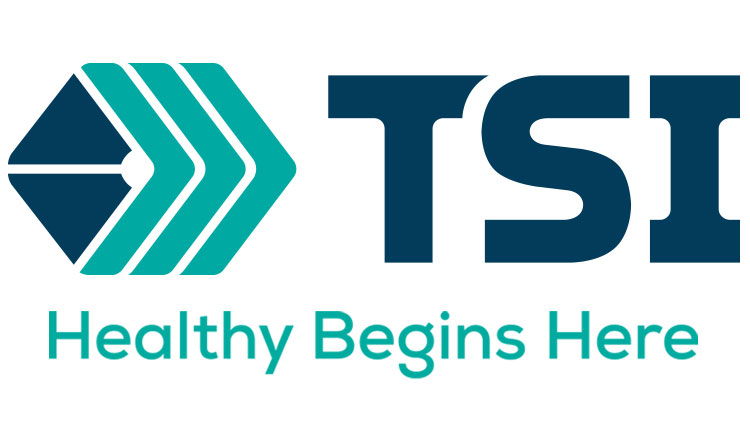Promotional Features
Muscle health gains traction as the next global healthy ageing trend
As our global population ages, consumers are becoming increasingly concerned about their long-term mobility.
Millions are experiencing gradual declines in their strength and energy. As these subtle changes become more pronounced, their daily lives and independence can be compromised.
There is hope. Consumers’ desire to remain active and independent well into their later years is bringing the critical issue of muscle health to the forefront of healthy ageing discussions. This is creating opportunities for ingredients with proven muscle preservation benefits.
Muscle health is about more than strength and performance. Muscles are essential for bodily functions, including everything from breathing and movement to temperature regulation and blood circulation.
Muscles improve the way the body processes food, lowering the risk of developing diabetes, cardiovascular disease and other chronic illnesses. Muscles are also critical to cell health because they are responsible for storing and regulating materials such as glucose and amino acids.
Muscle strength and function are essential components of basic wellbeing at any age, but their importance becomes even more pronounced in older populations. Hallmarks of good muscle health and mobility include being able to walk easily, and maintain good strength and balance. Muscle health is also key to maintaining energy levels, helping consumers to remain physically active and assisting with weight management.
Muscles are also associated with improved mental health. Physical ability enables social participation, reducing the risk of social isolation and its associated negative health impacts. Regular exercise, made possible by muscle health, has been linked to improved cognitive function.
A 2024 survey found that most global consumers (61%) recognise this link between good mobility and their overall health.1 They also recognise that lack of strength and flexibility may ultimately compromise their cognitive health, alertness and overall wellness.1
Frailty with age may be avoidable. A rapidly growing body of science demonstrates that muscle health can be maintained in ageing populations. This represents a tremendous market opportunity for innovation and category growth.
Everyone experiences age-related muscle loss
Involuntary age-related muscle loss is a natural part of the ageing process, beginning as early as age 30. The body gradually becomes less efficient at replenishing muscle tissue. The process may be accelerated by chronic physical inactivity and sedentary behavior.
If not addressed, depleted muscle mass contributes to a higher risk of falls and fractures. There is slower recovery after illness or injuries. Quality of life suffers as strength and energy decline. While the changes may be subtle at first, ultimately there may be a loss of independence as performing daily activities becomes challenging.
The market for products that address age-related muscle loss is about to explode as consumers realise that addressing muscle health is key to achieving their healthy ageing and mobility goals. In fact, 45% of global consumers say they are interested in products that address mobility health even if they are not currently suffering symptoms.1
The Asia-Pacific region, in particular, is seeing a growing number of adults prioritising prevention, often by increasing their focus on healthier living. And an estimated 63% of consumers in Asia-Pacific take supplements to improve their general health and wellness rather than a specific health issue.2
The functional food, beverage and nutraceutical industries are responding to this demand with innovative solutions tailored to meet the specific needs of the ageing Asian population. The proactive solutions include dietary supplements as well as functional foods and beverages that deliver noticeable benefits beyond basic nutrition and that are easy to incorporate into their daily lives.
Nutrition and exercise aren’t the only ways to stimulate muscle growth
Protein is only part of the solution. That is because with age, the body cannot process protein as well as it once did. And while exercise stimulates muscle growth, it may not be sufficient in more sedentary populations, either due to lifestyle choices or physical limitations.
Calcium β-Hydroxy-β-methylbutyrate, or HMB, is emerging as a critical nutrient in the muscle health space. It uniquely stimulates both protein synthesis and reduces muscle breakdown. NIH-funded research shows that adding HMB (as non-GMO myHMB) plus vitamin D3 to daily protein intake will improve muscle health in older adults, even without exercise.3
In healthy older adults, randomised controlled trials have shown HMB supplementation’s ability to:
- Help preserve muscle mass during 10 days of bed rest.4
- Improve mobility.5,6
- Improve strength and stability.7
- Improve muscle recovery after exercise, injury or illness.8,9
Opportunities for innovation with muscle health ingredients
The surge of muscle awareness among consumers has caught the attention of formulators and marketers, who are incorporating ingredients that support muscle health. It should be noted that consumers are educating themselves about the benefits of using science-backed products shown to deliver on promise.
What specifically influences consumers’ dietary supplement purchase decisions within the Asia-Pacific market?
- Clinically proven benefits 72% ranked this as somewhat or very influential in their supplement purchase decisions.2
- Non-GMO 64% would pay a premium for non-GMO claims on supplements.2
- Branded ingredients 74% think branded ingredients make supplements more trustworthy; 49% are willing to pay a premium for branded ingredients when choosing supplements.2
The way forward for muscle health products
People of all ages are becoming more health-conscious and aware of the benefits of maintaining muscle health, not just for physical appearance but for overall wellbeing and longevity. The growing emphasis on self-care among the world’s ageing population will shift the focus to healthy lifestyle and nutrition choices that help preserve muscle mass, strength and mobility.
Ongoing research into muscle physiology and nutrition drives the development of more effective ingredients, such as myHMB. Companies are capitalising on the demand for products that promote muscle health by developing formulas and delivery systems that make maintaining muscle health more appealing and accessible.
References
1. FMCG. Gurus Mobility Health in 2024 Global Report.
2. FMCG. Healthy Ageing in Asia-Pacific – Regional Report.
3. Rathmacher, J. A.; Pitchford, L. M.; Khoo, P.; et al. (2020). Long-term Effects of Calcium β-Hydroxy-β-Methylbutyrate and Vitamin D3 Supplementation on Muscular Function in Older Adults With and Without Resistance Training: A Randomized, Double-blind, Controlled Study. The Journals of Gerontology. Series A, Volume 75, Issue 11, Pages 2089–2097.
4. Deutz, N. E.; Pereira, S. L.; Hays, N. P.; et al. (2013). Effect of β-hydroxy-β-methylbutyrate (HMB) on lean body mass during 10 days of bed rest in older adults. Clinical nutrition (Edinburgh, Scotland), 32(5), 704–712.
5. Baier, S.; Johannsen, D.; Abumrad, Netal; et al. (2009). Year-long changes in protein metabolism in elderly men and women supplemented with a nutrition cocktail of beta-hydroxy-beta-methylbutyrate (HMB), L-arginine, and L-lysine. JPEN. Journal of parenteral and enteral nutrition, 33(1), 71–82.
6. Flakoll, P.; Sharp, R.; Baier, S.; et al. (2004). Effect of beta-hydroxy-beta-methylbutyrate, arginine, and lysine supplementation on strength, functionality, body composition, and protein metabolism in elderly women. Nutrition (Burbank, Los Angeles County, Calif.), 20(5), 445–451.
7. Stout, J. R.; Smith-Ryan, A. E.; Fukuda, D. H.; et al. (2013). Effect of calcium β-hydroxy-β-methylbutyrate (CaHMB) with and without resistance training in men and women 65+yrs: a randomized, double-blind pilot trial. Experimental gerontology, 48(11), 1303–1310.
8. Knitter, A. E.; Panton, L.; Rathmacher, J. A.; et al. (2000). Effects of beta-hydroxy-beta-methylbutyrate on muscle damage after a prolonged run. Journal of applied physiology (Bethesda, Md. : 1985), 89(4), 1340–1344.
9. Jówko, E.; Ostaszewski, P.; Jank, M.; et al. (2001). Creatine and beta-hydroxy-beta-methylbutyrate (HMB) additively increase lean body mass and muscle strength during a weight-training program. Nutrition (Burbank, Los Angeles County, Calif.), 17(7-8), 558–566.




